It seems we need to clarify language. For, we see in the Ortho types thread:
EG, 140: >> . . . Definitions of language:
Webster’s: the words, their pronunciation, and the methods of combining them used and understood by a community.
Britannica: a system of conventional spoken, manual (signed), or written symbols by means of which human beings, as members of a social group and participants in its culture, express themselves.
Cambridge: a system of communication consisting of sounds, words, and grammar, or the system of communication used by people in a particular country or type of work.
Collins: A language is a system of communication which consists of a set of sounds and written symbols which are used by the people of a particular country or region for talking or writing.
I will keep looking but I can’t find a definition of language that would apply to DNA and how it works. So, my tentative conclusion at this time is that this is sloppy use of language.>>
For one, EG didn’t do a broad enough dictionary search at just first level:
KF, 166 (following UB at 141 etc): >>On how a dictionary can be used to set up and knock over a strawman:
language noun
[ . . . ]
Definition of language1a : the words, their pronunciation, and the methods of combining them used and understood by a community studied the French language
b(1) : audible, articulate, meaningful sound as produced by the action of the vocal organs
(2) : a systematic means of communicating ideas or feelings by the use of conventionalized signs, sounds, gestures, or marks having understood meanings the language of mathematics
(3) : the suggestion by objects, actions, or conditions of associated ideas or feelings language in their very gesture— William Shakespeare
(4) : the means by which animals communicate the language of birds
(5) : a formal system of signs and symbols (such as FORTRAN or a calculus in logic) including rules for the formation and transformation of admissible expressions
(6) : machine language sense 1 [–> the protein code is an aspect of the GCAT machine language, which also has various regulatory functions]
2a : form or manner of verbal expression specifically : style the beauty of Shakespeare’s language
b : the vocabulary and phraseology belonging to an art or a department of knowledge the language of diplomacy medical language
c : profanity shouldn’t of blamed the fellers if they’d cut loose with some language— Ring Lardner
3 : the study of language especially as a school subject earned a grade of B in language
4 : specific words especially in a law or regulation The police were diligent in enforcing the language of the law.>>
That’s actually just a PS. The main discussion I wish to headline is:
KF, 165: >> . . . codes and alphanumerical digital symbol strings are linguistic, as are Chinese Character-like strings of stylised conventionalised, abstracted drawings, which go back to Cuneiform also.
[Insert, HT Wiki, Cuneiform’s development:]
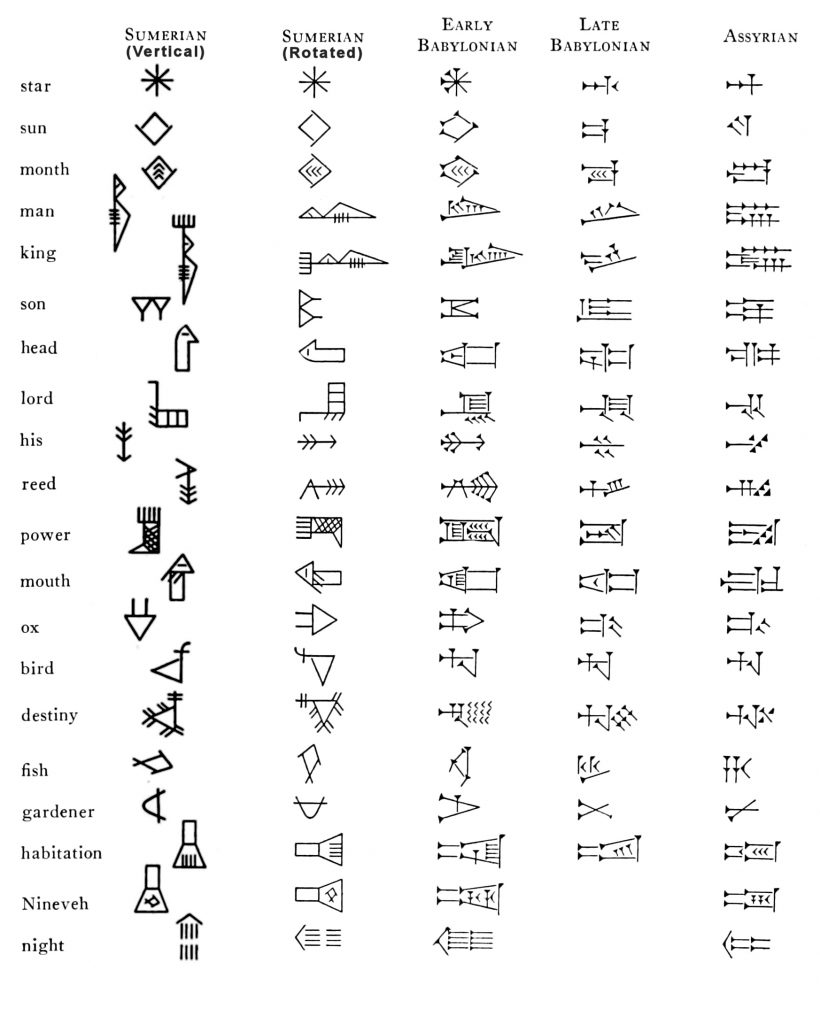
Bringing in other River Valley Civilisation level pictographic and logographic systems:
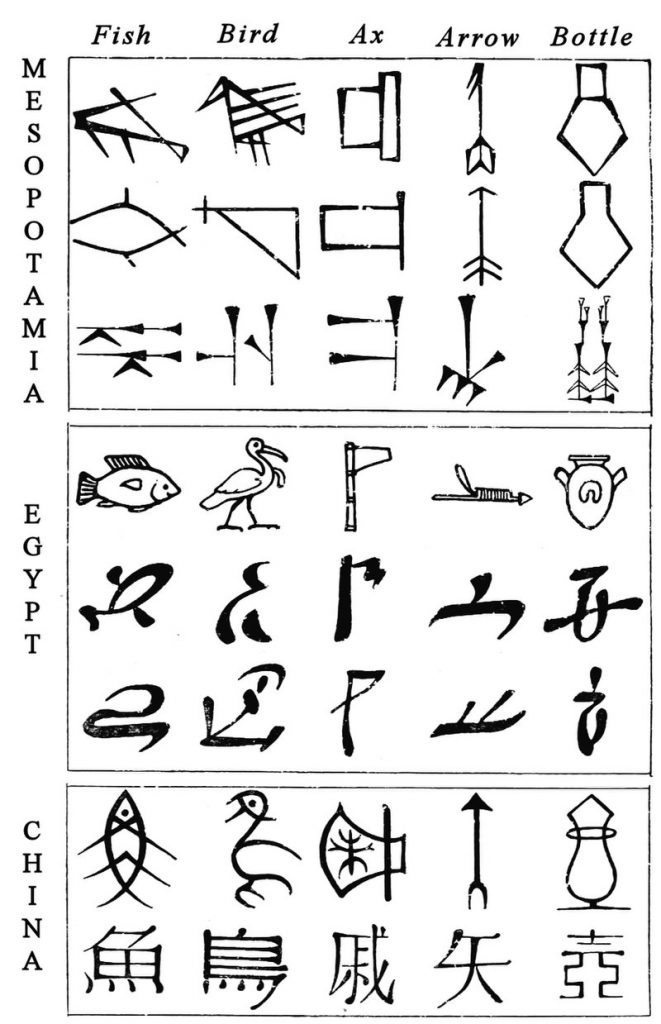
Observe, here, that the different versions of Chinese — e.g. Mandarin vs Cantonese — pronounce the symbols differently but they carry the same meaning, even as 1, 2, 3, 4, 5, 6, 7, 8, 9, 0 have common meanings but are pronounced differently in various languages. Where, place value notation then shifts the sense of 2 significantly in the different cases in say 2,222,222.222. The first, in context, is two millions of units, the last, 2 thousandths of the unit, 1. And, the forms vary, e.g. I remember Indian profs still using the tiny form of the 0 that comes from the home of the decimal numeral system, India.
Even alphabetic and partly alphabetic systems are representing sounds in temporal succession with strings of symbols in space *-*-*-*- . . . -* [many of which were originally stylised drawings as we see with “A” tracing to aleph, the ox . . . triangle head with horns].
Insert, as in:

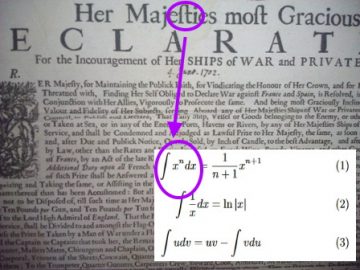
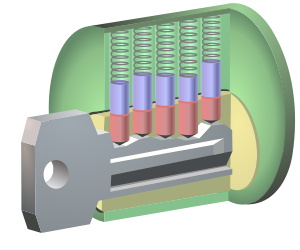
Similarly in mathematics, conventional symbols represent concepts, e.g. the elongated form S– used up to C18 — for sum being used to represent integration and DELTA the symbol for change. Where the Greek capital SIGMA is also used for sum in a different but related sense. That is, language is an integral part of Mathematics, also. Think of plus, minus, equal sign etc also or e, i, pi, h as a conventional infinitesimal, x, y, z as often space-linked variables, sine, cos, exponential functions, gamma function and many other special functions etc. Add here, Periodic table symbols for elements, their electronic configurations, typical state, etc then for molecules then how GCAT becomes a system for the Genetic Code — note that word! — and how it works in the cell based on prong height, comparable to a Yale lock.
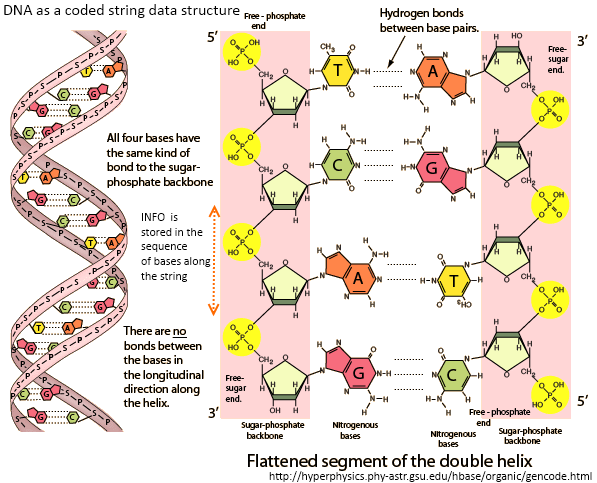
Ability to represent symbolically [and often to pronounce said symbols] is a key part of the structure and power of language-using intelligence that helps us to trace out lines of logical or creative thought.
Something is deeply, conceptually wrong in several objections above; they have a far too cramped view of what language phenomena are and are about. >>
So, language is not synonymous with natural language as spoken or written. The underlying concept is meaningful, coded, symbolic communication in accord with relevant protocols. Accordingly, layer-cake communication systems using codes . . .
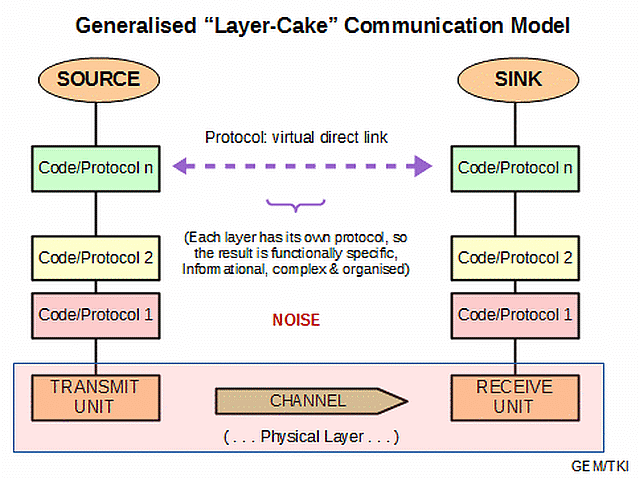
which extend the general communication system architecture . . .
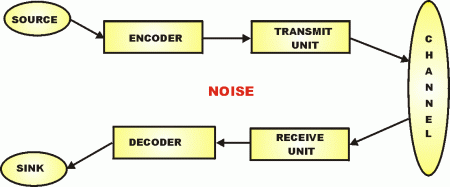
and specifically apply (per Yockey) to protein synthesis . . .
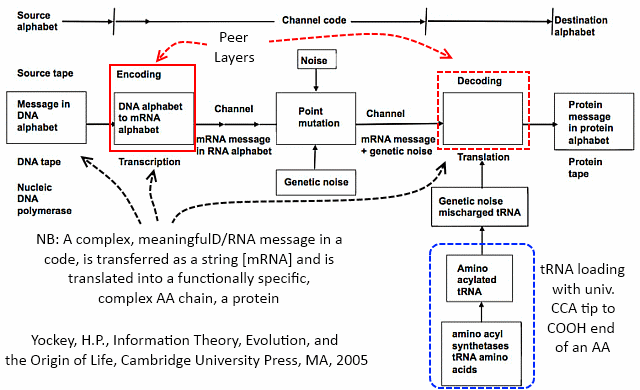
are expressions of language. Specifically, including machine language. END
F/N: As DS insists on seeing “well formed” expressions, here is a result from Wiki, on Human mitochondrial DNA:
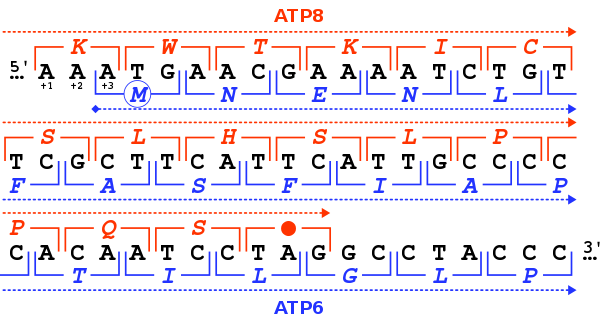
Notice, overlapping valid codes. Observe the Blue code START and the red code STOP. Ability to interweave code is one of the highest grade adept arts in machine code programming.